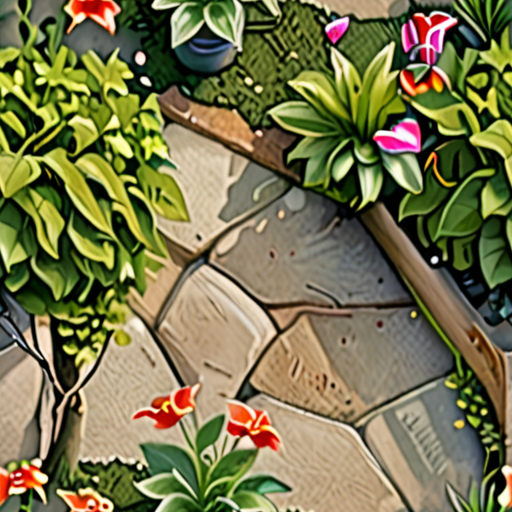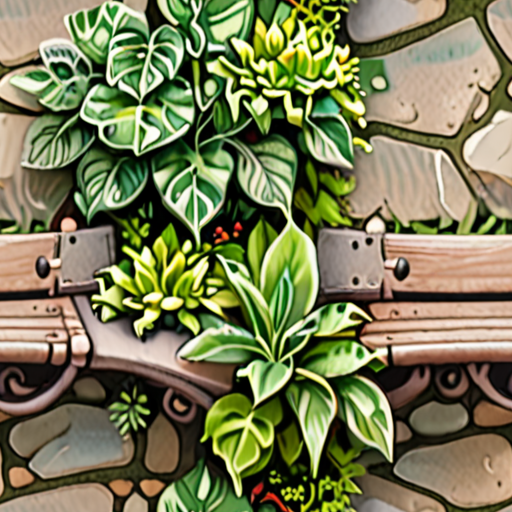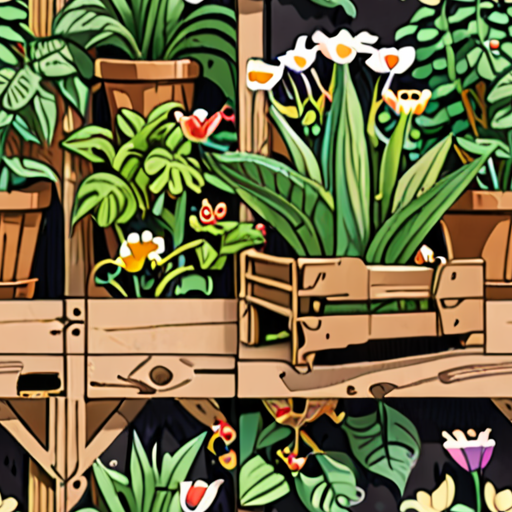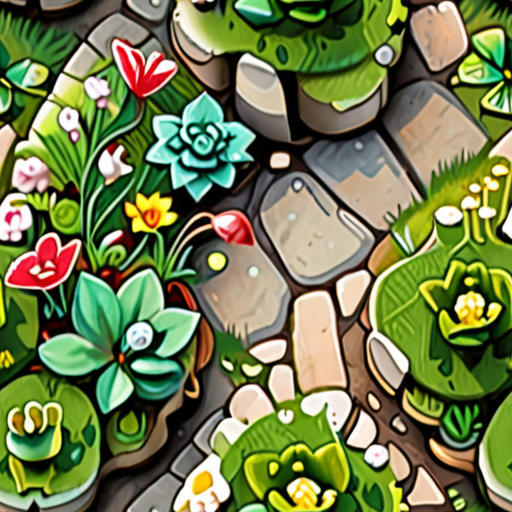Transform your outdoor space into a serene oasis without breaking the bank by embracing the world of DIY garden design. With a little creativity and some basic knowledge, you can create a beautiful and functional garden that brings joy to both you and your family. Whether you’re a seasoned gardener or a complete beginner, this comprehensive guide will walk you through the process of designing and building a stunning easy backyard landscaping idea that suits your unique needs and preferences.

How to Layout a Garden for Beginners
When it comes to laying out a garden, there are several factors to consider, including the type of plants you want to grow, the amount of sunlight and water they require, and the overall aesthetic you want to achieve.
- Tall Veggies: Place tall vegetables like sunflowers, corn, and tomatoes towards the north side of your garden bed to maximize sunlight exposure and prevent shading of lower-growing plants.
- Midsized Plants: Position mid-sized plants like peppers, eggplants, and okra in the middle of your garden bed, allowing for easy access and air circulation.
- Smaller Plants: Plant smaller vegetables like lettuce, herbs, and strawberries along the edges or in front of taller plants to create a visually appealing and functional layout.
- Pollinator Plants: Incorporate pollinator plants like lavender, coneflower, and black-eyed Susan into your garden to attract beneficial insects that can aid in pest control and improve crop yields.
Garden Bed Design Tips
To create a well-designed garden bed, consider the following tips:
- Group Similar Plants Together: Group plants with similar growing conditions and requirements together to simplify maintenance and care.
- Leave Space Between Plants: Leave enough space between plants to allow for proper growth, air circulation, and easy access for pruning and harvesting.
- Incorporate Pathways: Create pathways using materials like wood chips, gravel, or brick to separate different sections of your garden and make navigation easier.
- Add Decorative Elements: Incorporate decorative elements like trellises, arbors, and benches to enhance the visual appeal of your garden and create inviting spaces for relaxation and entertainment.
Additional Tips for Beginner Gardeners
For beginner gardeners, it’s essential to start small and gradually expand your garden as you gain experience and confidence.
- Start with Easy-to-Grow Plants: Begin with plants that are known to thrive in your local climate and require minimal maintenance, such as tomatoes, zucchini, and herbs.
- Learn About Soil Quality: Understand the importance of soil quality and take steps to improve it through composting, mulching, and other methods.
- Water Wisely: Learn how to water your plants effectively, taking into account factors like soil moisture, weather patterns, and plant requirements.
- Monitor Pests and Diseases: Keep an eye out for common pests and diseases and take prompt action to prevent their spread and minimize damage to your crops.
Creating a Simple Garden Design
When designing a garden, there are several factors to consider, including the climate, soil type, and available space.
- Determine the purpose of your garden: Will it be used for relaxation, entertainment, or growing vegetables?
- Assess the sunlight and shade patterns in your yard:
- Identify areas that receive full sun, partial shade, or full shade
- Consider the direction of sunlight and how it affects plant growth
- Evaluate the soil conditions:
- Test the pH level and nutrient content of your soil
- Determine if your soil needs amendments or fertilizers
- Choose plants suitable for your climate and soil type:
- Select plants that thrive in your region’s temperature and precipitation ranges
- Pick plants that match your soil’s pH level and nutrient requirements
- Plan the layout and design:
- Create a rough sketch of your garden’s shape and size
- Incorporate paths, seating areas, and other features as needed
- Consider water conservation and irrigation systems:
- Install a rain barrel or greywater system to collect and reuse water
- Implement efficient irrigation methods, such as drip irrigation or soaker hoses
- Add decorative elements and finishing touches:
- Incorporate mulch, gravel, or other groundcovers to suppress weeds and retain moisture
- Add outdoor lighting, sculptures, or other decorative features to enhance ambiance
- Start small and scale up gradually
- Use a mix of annuals and perennials for year-round interest
- Incorporate native plants and pollinator-friendly species
- Consider incorporating a compost bin or worm farm
- Don’t forget to leave space for maintenance and access
- Overcrowding the garden with too many plants
- Failing to plan for adequate drainage and irrigation
- Ignoring the impact of nearby structures and power lines
- Not leaving enough space for growth and expansion
By considering these factors and planning carefully, you can create a beautiful and functional garden that meets your needs and enhances your outdoor space.
Garden Design Tips and Tricks
Here are some additional tips to keep in mind when designing your garden:
Common Mistakes to Avoid
Avoid common mistakes like:
By avoiding these pitfalls and following these guidelines, you can create a stunning and functional garden that brings joy and beauty to your life.

Is DIY Landscaping Worth It?
As a homeowner, deciding whether to tackle DIY landscaping projects can be a daunting task.
- One of the primary benefits of DIY landscaping is the potential cost savings compared to hiring a professional contractor.
- However, it’s essential to consider the time and effort required to complete these projects, which may outweigh the initial cost savings.
The Pros of DIY Landscaping
- Cost-effectiveness: By doing it yourself, you can save money on labor costs associated with hiring a professional contractor.
- Customization: With DIY landscaping, you have complete control over the design and implementation of your outdoor space.
- Learning opportunity: Tackling DIY projects can be a great learning experience, teaching you valuable skills and knowledge about gardening and landscaping.
The Cons of DIY Landscaping
- Time-consuming: DIY landscaping projects require significant time and effort, which may take away from other important aspects of your life.
- Lack of expertise: Without proper training and experience, you may struggle with complex tasks or make costly mistakes.
- Physical demands: Landscaping work can be physically demanding, requiring manual labor and potentially straining your body.
When to Consider Hiring a Professional
- Complex projects: If you’re planning a large-scale landscaping project or one that requires specialized expertise, it’s often best to hire a professional contractor.
- Limited time or energy: If you don’t have the time or physical ability to tackle a DIY project, hiring a professional can save you stress and ensure a high-quality outcome.
- Desire for perfection: If you want a flawless and polished finish, hiring a professional contractor can guarantee a high level of quality and attention to detail.
Conclusion is Not Needed
Ultimately, whether DIY landscaping is worth it depends on your individual circumstances, preferences, and priorities.
By weighing the pros and cons and considering your options carefully, you can make an informed decision that suits your needs and budget.

What is the Cheapest Ground Cover for a Garden?
We understand that finding affordable yet effective ground cover options can be challenging, especially for those on a tight budget.
- Cheap Ground Covers for Walkways:
- Creeping Phlox
- This low-maintenance option thrives in well-drained soil and partial shade, making it perfect for walkways and slopes.
- It can be easily divided, allowing you to propagate new plants and reduce costs.
- Another cost-effective alternative is Thyme, which requires minimal maintenance and can tolerate foot traffic.
- Thyme is also drought-tolerant, reducing water consumption and saving you money on utility bills.
- For a more extensive coverage, consider using Pachysandra, a slow-growing evergreen that forms a dense mat.
- Pachysandra prefers moist, acidic soils and partial shade, making it ideal for woodland gardens or shaded areas.
- Other affordable options include Vinca minor, Ajuga reptans, and Sedum spurium, all of which offer excellent ground cover capabilities.
- When selecting a ground cover, remember to choose species suitable for your climate and soil type to minimize maintenance and ensure success.
- By considering these factors and opting for low-cost alternatives, you can create a beautiful and functional garden without breaking the bank.
At Peck and Gartner, we strive to provide our readers with practical advice and inspiring ideas for creating stunning outdoor spaces on a budget.
Whether you’re a seasoned gardener or just starting out, our team is dedicated to helping you achieve your landscaping goals without sacrificing style or functionality.
Visit our website for more information on gardening tips, DIY projects, and home renovation ideas.
Best Ground Covers to Prevent Weeds in Flower Beds
We’ve got the scoop on the best ground covers to keep those pesky weeds out of your garden once and for all.
- Creeping Mazus (Mazus reptans)
- Sweet Woodruff (Galium odoratum)
- Creeping Thyme (Thymus serpyllum)
- Phlox subulata (Creeping Phlox)
- Vinca minor (Periwinkle)
- Pachysandra (Pachysandra terminalis)
This low-growing, spreading ground cover has tiny green leaves that give way to open-faced tubular flowers in mid-spring. Its dense foliage makes it difficult for weeds to grow, making it a great choice for suppressing unwanted growth.
This perennial ground cover has delicate white flowers in late spring and prefers well-drained soil and partial shade. Sweet woodruff spreads quickly and can form a dense mat, preventing weeds from taking hold.
This fragrant, low-growing ground cover has tiny leaves and produces small pinkish-purple flowers in summer. Creeping thyme is drought-tolerant and can thrive in poor soil, making it an excellent choice for areas with challenging growing conditions.
This evergreen ground cover has pink, purple, or white flowers in early spring and prefers well-drained soil and full sun. Creeping phlox forms a dense mat and can suppress weeds effectively, making it a popular choice for gardeners.
This fast-spreading ground cover has blue-purple flowers in spring and prefers well-drained soil and partial shade. Vinca minor can form a dense mat and can be invasive in some areas, so be sure to check local regulations before planting.
This slow-growing ground cover has glossy leaves and prefers well-drained soil and partial shade. Pachysandra forms a dense mat and can suppress weeds effectively, making it a popular choice for shaded areas.
When choosing the best ground cover for your flower bed, consider factors like sunlight, soil type, and maintenance requirements. By selecting the right ground cover for your needs, you can enjoy a weed-free garden and reduce the need for herbicides and other chemicals.
At Peck and Gartner , we recommend incorporating these ground covers into your garden design to create a beautiful and low-maintenance outdoor space.

Alternatives to Gravel in Your Garden
We understand that you may be looking for alternatives to gravel in your garden, and there are several options available.
- Decorative Stones: These come in various shapes, sizes, and colors, making them perfect for adding visual interest to your garden beds and pathways.
- Mulch: A popular choice for garden beds, mulch helps retain moisture, suppress weeds, and regulate soil temperature.
- Pebbles: Similar to gravel, pebbles are small stones that can be used to create a decorative border around plants or paths.
- Crushed Brick or Concrete: These materials can be used to create a durable and long-lasting surface for pathways and driveways.
- Sand: A fine-grained material often used in gardens for drainage and erosion control.
- Wood Chips: A cost-effective option for garden beds, wood chips help retain moisture and suppress weeds.
- Compost: Rich in nutrients, compost can be used to improve soil health and fertility.
Considerations Before Choosing an Alternative
Before selecting an alternative to gravel, consider factors such as durability, maintenance requirements, and aesthetic appeal.
- Durability: Some alternatives, like crushed brick or concrete, are more durable than others and can withstand heavy foot traffic.
- Maintenance: Mulch and wood chips require regular replenishment, while decorative stones and pebbles are relatively low-maintenance.
- Aesthetic Appeal: Consider the color, texture, and overall look of the alternative material to ensure it complements your garden’s style.
Conclusion
When choosing an alternative to gravel in your garden, consider factors like durability, maintenance requirements, and aesthetic appeal. By selecting the right material, you can create a beautiful and functional outdoor space that meets your needs and enhances your property’s value.

0 Comments